Unveiling Elegance: A Primer To Professional Marble and Granite Polishing


Natural stone surfaces exude a timeless elegance and sophistication, making it a popular choice for homeowners and businesses alike. Quality natural stone can be a significant investment and there are simple and straightforward actionable steps to keep costs of care down. Ideally, these steps help keep visits from your stone polishing experts to a minimum and maximize your “love of place”. Consider this your basic primer to marble and granite polishing, care to help give that peace of mind so you can enjoy the natural brilliance and allure of your stone surfaces longer.
Over time, most stone surfaces can become dulled, etched, scratched and otherwise discoloured and not looking their radiant best. Maintaining the visual and textural beauty of materials like marble, granite, travertine, limestone, and quartzite requires routine care and a little attention to detail. All surfaces, whether engineered or natural, require at least a minimal effort to protect the surfaces. and to keep it looking great.
Inevitably, despite our best intentions, day to day living of life takes over; homes get lived in, stone surfaces get walked on, kitchen countertops get spilled on and messes get made and unsightliness or even damage can occur. From time to time, natural stone surfaces do require some degree of attention. Some feel that caring for their stone surfaces is too much work and its better to own engineered stone, know most commonly as Quartz. Although it can mimic some of natural stone’s appeal, quartz cannot match polished stone and its depth of shine an clarity when properly cared for and professionally polished. Despite marketing claims, engineered quartz has its own limitations, its own set of problems and is far from “worry-free”. Natural stone is not for everybody, but the care and maintenance can be worked into a simple routine and need not be daunting.
When professionals refer to stone polishing, we are referring to the action of actually grinding a minimal and often minuscule amount of the surface of stone. Consumers however, generally refer to polishing as wiping or rubbing a product on the stone surface to make it shine. Professional polishing of natural stone is in reality less aggressive than grinding the stone by refinishing or full stone restoration standards, but does remove an amount of the surface stone, however small. This is why is why it’s necessary for true polishing of stone to use a high quality equipment and polishing products for best results. This includes hand machines and floor machines using the correct range of low speed torque and horsepower.
What is the difference between a polished and a honed surfaces? Typically professionals use similar types of equipment and techniques for both. Honing’s final end product is a few abrasive steps removed so the finish, while having the same perceived flatness and smoothness as polished surfaces, will have no or limited shine and reflectivity. Some prefer the appearance of a honed, less shiny surface, and some find that the honed surface offers greater frictional properties than polished surfaces. This is why the finish on natural stone shower floors are almost always honed versus highly polished. This is true for the more coarse grit low honed surfaces, not the high honed, higher grit satin finishes.
Understanding Stone Is Understanding Stone Polishing
Now that we understand the importance of maintaining and enhancing the natural beauty of stone, we now turn to the behaviourial characteristics of stone. In order to polish stone effectively, we have to understand the behaviour of your stone when it undergoes polishing. We know that stone polishing is strictly a mechanical action on the stone’s surface. We need to understand how the surface of the stone interacts with different materials to get a real understanding of polishing natural stone.
Stone deposits have existed all across the globe since the earth was first formed. There are only three ways that these stone deposits have been created: by sediments that have been weathered and eroded, cemented and pressed together over time called Sedimentary rock, by that Sedimentary rock found deeper in the earth under greater temperature and pressure compressed and metamorphosed into Metamorphic Rock, and molten rock material deeper still in magma chambers with even greater temperature and pressure create into Igneous rock. Yet all stones have been formed by one of these three processes.
The Natural Stone Institute says, “Stone composition is a far more complex issue than is commonly thought, and the in-service performance and behavior of the stone can be significantly influenced by even minor constituents of its composition”
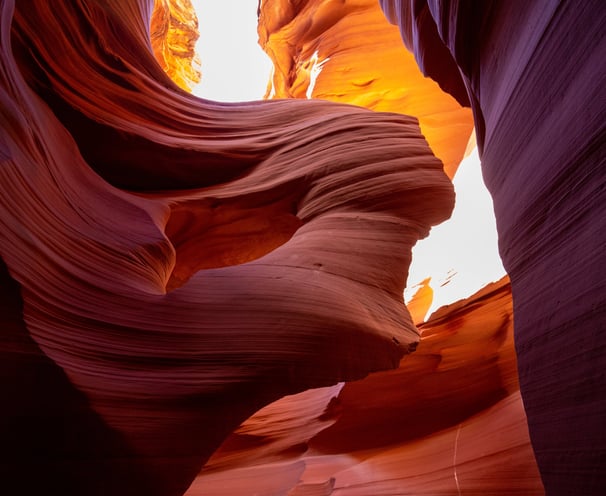

This is why knowledgeable stone care professionals understand the basic geology of rock so that they can effectively polish natural stone to bring out its best features.
Stone categorization is clouded by the fact that while geologists understand that there are hundreds of different rock types, the stone industry, including producers, fabricators, wholesalers and retailers, use much more broad definitions of stone types and group them quite differently than the scientific community. In doing so, the industry puts similar materials into stone groups despite the fact that the stone does not technically, geologically and scientifically belong to that group.
So, how does stone actually "polish" consistently with so many confusing groupings and categories? Stone polishing is strictly a mechanical abrasive process, with the exception of some marble varieties, where acids can be used to react with the calcium carbonate content to create a chemical shine. Most other types of stone with little to no calcium carbonate content require a mechanical-only shine using abrasive pads. With some differences in application and technique most, but not all stone surfaces react well to polishing..
When a lighter touch is needed and a full stone restoration is not necessary and professional marble and granite polishing is the solution. When we speak of natural stone polishing, we refer to the process of removing dullness, mild to moderate scratch and wear patterns and apply a low or high honed finish (flat/matte finish or the slightly more polished satin finish) or a high-polish shiny finish, it all falls under polishing. Polishing is the final process after cleaning, masking to protect surrounding surfaces and after full restoration if it needed that level of refinishing. Otherwise, polishing can stand alone without restoration preceding it.
We need to know if the stone’s density and composition is harder or softer, which tells which stone will be harder to polish and which will be easier. For classification, the differences in composition variances may be negligible to a geologist, but because that will affect the stone's behavoiur under honing, polishing or refinishing it is important. To the restoration professional differences in stone type, classification and composition are significant because the first thing they do is visually identifying the behavioral group based on common characteristics. It is important to have a general knowledge of stone and know the differences between marble, travertine, limestone, granite, and other stone. Physical characteristics and mineralogical makeup are the primary influences of how a stone behaves.
For example, the stones classified as "variegated" are composed of multiple minerals, some of which are are very sensitive to polishing compounds, while some of the other minerals are not and are sensitive to completely different compounds. These different minerals will cause a non-uniform response to abrasives and chemicals used in the polishing or restorative process unless the polisher is aware of this. Anyone attempting to stone polish these difficult types of stone need to be wary of any material that comes in contact with the stone surface and to know how it will respond
Stone Polishing Is Affected By Stone Composition
There are two stone types based on their composition. Stone can be made from either calcite, which is made of calcium carbonate or calcium magnesium carbonate or stone can be made from silica.
Granite is formed deep in magma chambers where molten, melted rock and minerals cool and re-crystalize over great periods of time. Granite can have a characteristic “sparkle” when it catches the light due to its high mineral content. These types of rock are formed from very different components and formed in very different ways and because of this they will behave very differently under polishing. Knowing the type of stone, its general geology, its porosity, its density and the stone’s sensitivity to certain components of the stone will help you to polish it safely and effectively .Limestone and Travertine are calciferous created from the breakdown of calcite-containing shell fragments and organisms that have been layered down and compacted over time, pressure and moderate heat. If the conditions are right, with more pressure, more time and higher temperature (but not enough to melt the stone), they can metamorphose into marble.
For example, sandstone is a sedimentary silica-based rock formed from grains of quartz cemented together over great periods of time and under pressure. With greater heat and pressure and the passage of time, it can metamorphose into quartzite. (The Whitehouse in Washington, D.C. is made of sandstone)
Granite is a silica-based rock formed deep in magma chambers where molten rock and minerals cool and crystalize over great periods of time. Granite can have a very characteristic “sparkle” when it catches the light due to its high mineral content. Some granites are absolutely stunning. These types of rock are formed from very different compounds and formed in very different ways and because of this they will behave very differently under polishing. Knowing what type the stone it is, its general geology, the porosity of the stone, its density and the stone’s sensitivity to certain substances of the stone will help you to polish it safely.
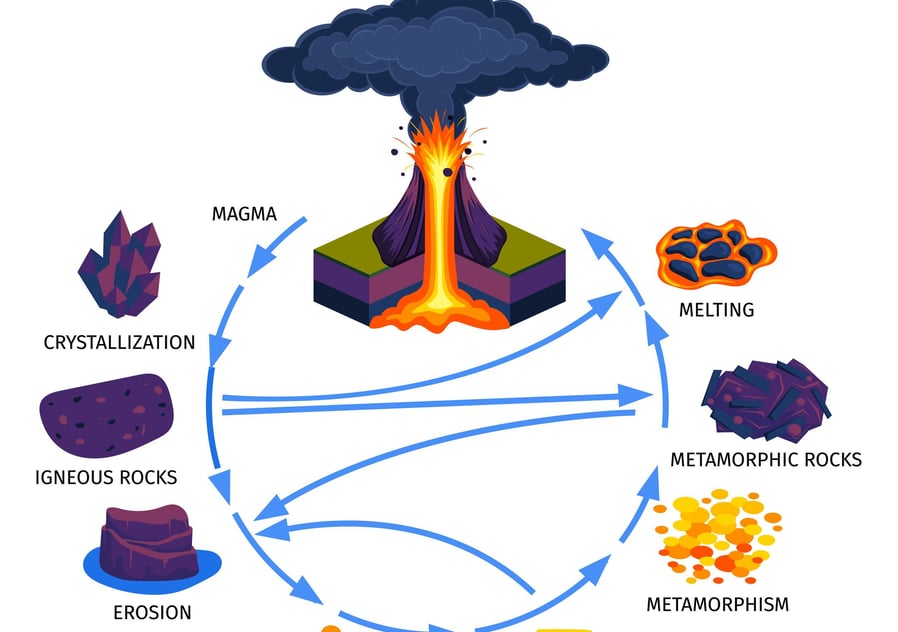

When Do Your Surfaces Need A Stone Polish
Dullness and lack of luster, scratches, etch marks and discoloration are all signs that your stone needs polishing. It all depends on the degree and aesthetic presentation because rough scratches and etches or long standing discolouration that have been present over relatively long periods of time may in fact not be able to be polished out. That level of wear and tear most likely requires restoration and refinishing and a professional evaluation will determine this. A full refinishing requires more work and will have more cost. The importance of regular maintenance is emphasized here because there is no way around proper care for the stone surfaces. However routine, natural stone requires some degree of action such as quickly wipe up spills, treating minor stains, and relatively gentle treatment of the surface like using cutting boards to avoid scratches.
Ensuring the types of stone like granite kitchen countertops, are sealed properly helps prevent staining. One quick way to test for the presence of working sealer is the water test. Put several drops of water directly on the stone. If after 15 minutes, if the water is ‘beaded” and still present on the surface then no re-sealing is required at this time.
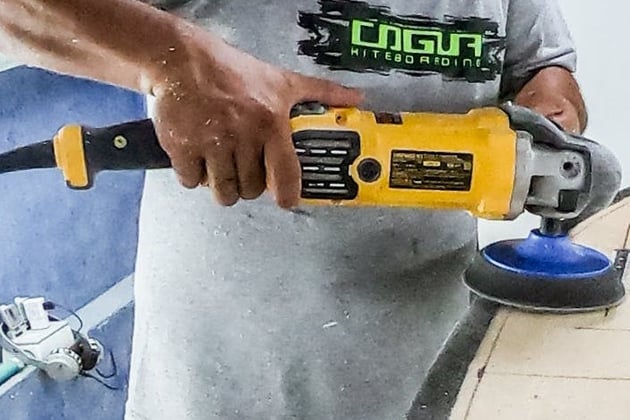

If the water is no longer present on the surface of the countertop and there is a darkened area in the stone where the water was then there is no working sealer present. The appropriate sealer for that particular stone needs to be re-applied. If you are unhappy with the look of your stone, call your local stone care professional for an estimate. You can also arrange for periodic polishing and sealing if thtat is appropriate for your stone.
When is it best to call a professional for natural stone polish work and when is it okay to do it yourself? Simply put, stone polishing via hand-machine, high quality polishing and honing powder and polishing paste occurs by abrasion and friction which creates heat. Without mechanical abrasion, no actual polishing can occur. The exception to this is the calcite containing stones like marble, limestone and travertine. Acid containing powders are considered "hot" chemically and can “burn” a shine with heat and abrasion. and is a chemical polish This can occur with any type of stone just like gemstones.
Oxalic acid present in the "hot" powders is used to speed the polishing process and creates a chemical reaction with the calcite in marble, travertine and limestone. Silica-based stone like granite and quartzite contains little to no calcite so it cannot be polished with oxalic acid. Too much oxalic acid used on the calcite based stones will burn. dimple and cause an "orange peel-like" plastically appearance. Inexperience, too much powder or working surfaces too long under acidic conditions can contribute to this condition. Sometimes the surface is overworked because it was misjudged as a polish-job versus a restoration and refinishing. Restoring and refinishing the "burned" surface is is necessary to remove the burnt surface. White Carrara marbles are particularly susceptible to orange peeling and cannot be polished “dry” without water, as the that from the friction will “burn” and orange peel the surface. Because of the risks involved it may not be in the wheelhouse of the DIYer,
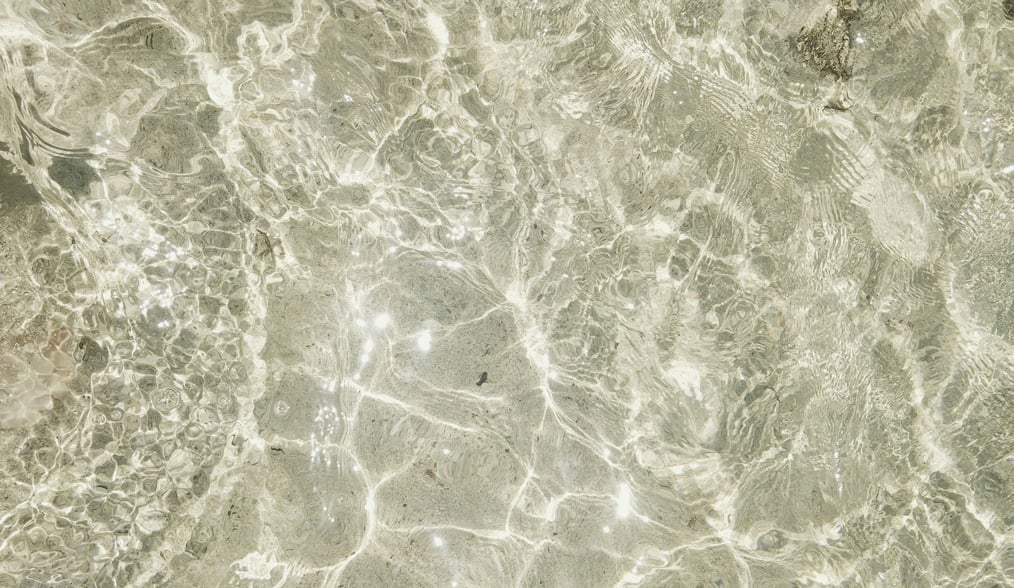

When Is It Time For DIY vs Professional Stone Polishing
When stone surfaces are assessed whether by homeowner, business owner or stone care processional, it is simply a diagnosis of the current conditions and the possible cause of any issues. The stone also needs to be looked over for signs of previous repairs and restorations. The assessment does not just involve inspecting the type and condition of stone, but a review of current stone care and maintenance products being used is often necessary. Many cleaners used by stone owners and some professionals can be harmful to the stone. Acidic clearing products may cause etching, abrasive cleaners may create dullness, oil-based products may cause residue smudges and wax-based products may build up on the stone surface. Knowing this will help dictate how to deep clean the surfaces prior to polishing. Any of these built up residues can gum up the polishing equipment. Which cleaners have been or are being used will help determine the best cleaning techniques available. All damage and repairs need be addressed prior to polishing
The Process Of Polishing Stone
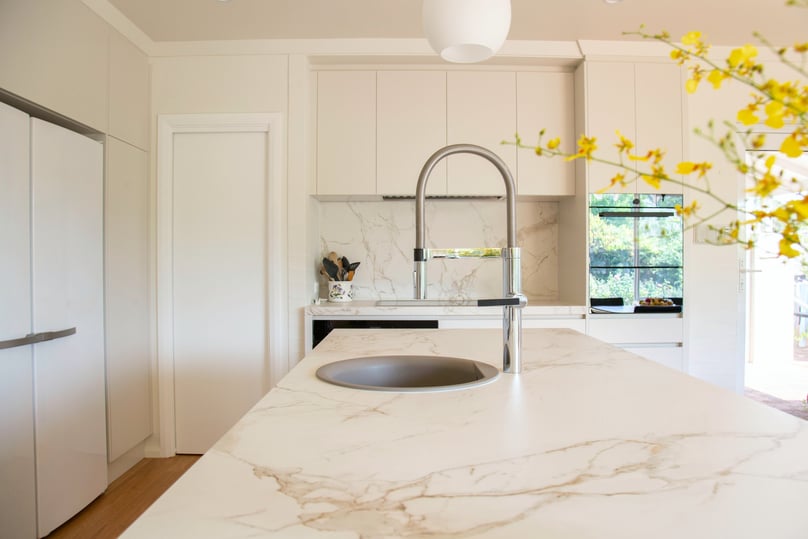

We will discuss polishing of two general behavioural classes of stone: Marble, Travertine and limestone are all cacite stones formed from calcium carbonate that became sedimentary rock in the case of travertine and limestone, or metamorphosed into marble. They tend to behave similarly in general terms and will often etch if acids are present.
Polishing pastes and powder compounds contain acidic components that could damage wood, metal , carpeting and other close-by surfaces so proper masking off of areas adjacent ot the stone surface must be done with care. .After refinishing and restoration steps, polishing is necessary whether it is a floor, countertop or a shower. There are countless brands and types of polishing powders and pastes on the commercial and professional market. It is highly recommended that the consumer and professional alike not to shop based on price but instead use the highest quality materials that are affordable and available. The amount of polishing compound used under the low speed floor machine or the low speed hand machine varies with the type of pads used, and the hardness and mineral content of the stone. Too much can “burn” marble, travertine and limestone because the calcium carbonate content in their composition can be damaged if using lower quality compounds and even how much time is spent polishing in each section. Professional judgement and experience play a key roll here.
These are very general guidelines and not specific directions on how to polish in the field. There will always be needed adjustment depending on many factors The processes of polishing stone requires a water source, a wet/dry shopvac to vacuum up the slurry after polishing, and a product to neutralized and rinse remaining polish remnants off the surface. A great quality sealer will protect the stone surfaces from further issues for its particular useful period. Be careful to not track the slurry onto other finished areas of the floor because it could stain surfaces or leave etch marks of freshly polished stone surfaces.
Limestone, Travertine And Marble Polishing
Granite Polishing
One of the favourite features of Granite is that it is naturally resistant to scratches, moisture and many chemicals. This is what tends to allow most granites to maintain a high quality surface finish for sometimes years. As tough and durable as granite is, if a scratch or imperfection does become apparent, usually only spot repair and refinishing is necessary. The whole surface need not be resurfaced, and only needs to be polished to blend in areas after the damage has been repaired. When stone polishing technicians are asked to clean and polish granite countertops that have dulled over time, it is common to polish the entire countertop surface with granite polishing creams, powders or pastes using a hog’s hair burnishing pad or a spray polish/crystallizer with a steel wool pad. This process, without doing a full refinishing and restoration brings back the natural colour of the stone and brings the surface level shine to the customer’s preference.
A Final Word On Natural Stone, Marble & Granite Polishing
It is important to know that natural stone, marble and granite polishing is more than rubbing a compound or a paste on a stone surface to make it shine to the desired level. Properly polished and honed natural stone actually actually a grinding process, and removes a small amount of the surface layer with water in a slurry. This prevents heat and dust build up and removes surface damage. When the appropriate tools, equipment and high quality products are used, removing and grinding the stone is straightforward with a few caveats.
Prior to polishing, the stone must be evaluated to know if it has been previously restored or repaired or damaged in any other way. The surfaces should be thoroughly inspected for any residue of topical sealers, waxes or inappropriate “polishing agents”, creams or pastes. Any grime, dirt or oily buildup needs to be deep cleaned prior to any polishing or refinishing. Surrounding areas and surfaces must be protected via waterproof tape and plastic and canvas tarps.


Most importantly, the category and type of stone to be polished must be determined. Beyond its non-geological classification, we need to know the features and characteristics of that stone. Different stone and even similar stone contain many different minerals compounds and rock and are not consistent from surface to surface. This is because of the thousands of different types of stone their mineral and rock components may polish differently and at different rates. With polishing, honing and refinishing, the key to aesthetic success is to get an even hone. This is why many types of stone are out of reach of many DIYers.
Serving Toronto and the Surrounding GTA
Don't take your Floors, Countertops & Showers For Granite...
Have them professionally restored, sealed and maintained
437-429-2780
Call, Text or Contact Us NOW For A Quote


info@AndrewsProfessionalStoneCare.com
© Copyright 2023
Service Areas
Toronto & GTA
Oakville
Mississauga
Burlington
Markham
Vaughn
Thornhill
Richmond Hill
Woodbridge
Pickering
Ajax
